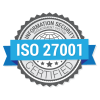Enterprise organizations have been striving to adopt wide ranging emerging technologies including technology expense management providers and telecom expense management software throughout recent history, meanwhile contract value management, contract value intelligence and enterprise spend analysis practices have also been gaining momentum.
However, a growing problem exists, the complexity for enterprises to efficiently manage technology expenses and gain insights on all technology spend increases every day.
Mobile networks have evolved, the internet has become part of our every day life, and IoT technology has become increasingly prominent among businesses. The widespread arrival of 5G is now imminent, which alongside cloud computing will enable the sophisticated IoT networks of the future.
All of this amounts to an even more complex technology service landscape than we currently have, and most enterprises are already failing to achieve optimal value from their technology expense management software and the expensive services they pay for.
To explore and highlight the disparity between innovation and value management, we need to reflect on some crucial milestones in the technology timeline. Looking back will allow us to map the rapid growth in technology service consumption that has led us to where we are today.
Then after that, looking to the future will then make it clear why organizations should act now to optimize their value.
Speaking via the internet
Shortly after the arrival of the world’s first website in 1991, Brian Wiles, an American software engineer, set up NetFone to speak with his colleagues around the world via the internet. This breakthrough fundamentally changed the way businesses could communicate globally, marking the dawn of a new era in enterprise consumption of technology services. Within a decade of the creation of NetFone, various organizations began selling packaged telephony services to businesses.
Cellular M2M
The cellular M2M industry came about in 1995, beginning when Siemens set up a department inside its mobile phone business. The goal of this department was to develop and launch a GSM data module that would enable machines to communicate via wireless networks. This progress blew the starting whistle on a whole new theme of innovation, with the technology becoming critical to many industries and leading to other innovations like automated machine to machine intelligence.
The arrival of 3G
Later in the 1990s, another important breakthrough took place that would shape the world of communications and technology services. 3G was launched in 1998 before becoming commercially available in 2001, and it would prove to be ground-breaking because of the way it leveraged the internet. This sparked a widespread demand for network access, with enterprise businesses seeing a plethora of opportunities to improve their communications and global operations at scale.
Cloud computing
In 2002, AWS launched its public cloud and added another cutting-edge technology to the mix, just as mobile networks and M2M began to boom. Although it took some time for organizations to adopt the technology, it would soon be at the heart of operations for some of the world’s largest enterprises. The cloud enabled organizations to alleviate the burdens of maintaining servers while increasing elasticity and scalability.
The internet of things
Following on seamlessly from the emergence of cloud technology in 2002, next came the notion of industrial IoT (Internet of Things). Industrial IoT pertains to connected devices deployed by enterprise organizations, enabling the collection and storage of data to examine historical trends and extract valuable insights. In the near future this technology would reveal powerful use cases like digital twins, prompting enterprises to invest even more heavily in technology services.
Traditional technology expense management is neglecting contract value optimization
In their haste to innovate and adopt this new range of technologies, the average enterprise now spends more on technology services than on goods.
They also account for over 70% of the average enterprise spend on average, spanning mobile contracts for employees around the globe, to M2M communications for machines and vehicles.
While this operational dependency has been growing, value management approaches have remained simplistic, inaccurate and siloed.
Disparate teams are sharing erroneous contract and invoice data, causing organizations to lack an understanding of the actual value generated by the services they are paying for.
This bad data and the ineffective processes that cause it to proliferate are highly costly, with organizations typically spending between 15 and 30 per cent too much on their technology services. Such huge unnecessary costs are preventing enterprises from experiencing the true value that technology has to offer, but the strain of this problem can be reversed with the right solution.
Why now is the time to act
The arrival of 4G in 2009 brought about its own breakthroughs, including higher bandwidth and lower latency, enhancing the way organizations could communicate and utilize data. While all of these moments in technology history have been crucial, we now stand at the brink of a major step forward with the advent of 5G upon us.
5G networks are set to offer speeds up to 100 times faster than the top speeds of 4G and will enable the extensive IoT networks of the future. In addition to offering much faster speeds, 5G networks will also be able to handle more data, helping organizations to realize the full benefits of industrial IoT and the real-time data insights it can provide. According to Ofcom, the world will be generating 13 times more data than it is today by as soon as 2025.
More data and more technology services mean more complexity, and this will result in even worse data hygiene if traditional contract management approaches are held onto. The result of this would be enterprise organizations losing out on even more value than they already are, with their hamstrung teams facing greater pressure and disarray.
Technology expense management v contract value intelligence: What is the solution?
Thinking Machine Systems has developed an innovative AI-powered solution to this growing problem.
With intelligent auditing capabilities, the solution interrogates the invoice and contract data associated with your technology services, then identifies anomalies and opportunities to regain lost value. Whether you need a holistic spend analytics viewpoint, a solution for cloud spend management, negotiate the best 5G business mobile plans or simply to reduce telecom cost, our platform will be pivotal to achieving your goals.
Your organization can benefit immediately from recommendations relating to opportunities like unforeseen discounts, while also benefiting in the long run by empowering teams with cleaner, more accurate data insights. Once armed with the right information, your procurement teams can target deals that will provide optimal value, while also enabling various teams to collaborate more effectively.
Our brief timeline has displayed the culmination of technologies that have brought us to where we are today. While enterprises have made great progress by leveraging technology, their ravenous consumption of services has caused complexity, and value is increasingly falling through the cracks.
As organizations are stuck spending up to 30 per cent too much on their services, the arrival of 5G and other technologies threatens to compound the problem. By leveraging the Thinking Machine Systems solution, value can be salvaged right now and, in the future, when visibility will be needed most.


